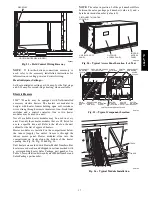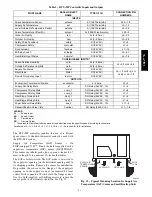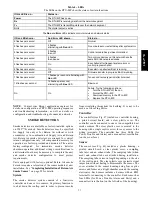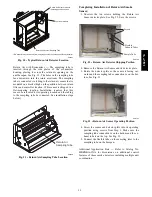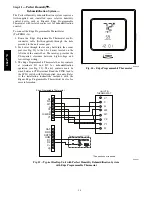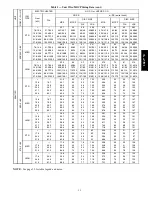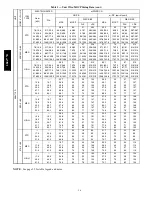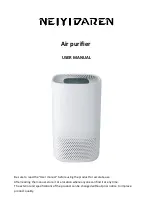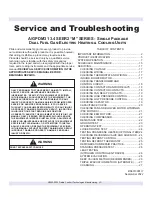
25
The
Fire
Shutdown
Switch
configuration,
MENU
→
Config
→
Inputs
→
input
5
,
identifies
the
normally open status of this input when there is no fire
alarm.
Connecting Discrete Inputs
Filter Status
The filter status accessory is a field--installed accessory.
This accessory detects plugged filters. When installing
this accessory, the unit must be configured for filter status
by setting
MENU
→
Config
→
Inputs
→
input 3, 5, 8, or 9
to Filter Status and normally open (N/O) or normally
closed (N/C). Input 8 or 9 is recommended for easy of
installation. Refer to Fig. 29 and Fig. 31 for wire
terminations at J5.
Fan Status
The fan status accessory is a field--installed accessory.
This accessory detects when the indoor fan is blowing air.
When installing this accessory, the unit must be
configured
for
fan
status
by
setting
MENU
→
Config
→
Inputs
→
input 3, 5, 8, or 9
to Fan
Status and normally open (N/O) or normally closed (N/C).
Input 8 or 9 is recommended for easy of installation. Refer
to Fig. 29 and Fig. 31 for wire terminations at J5.
Remote Occupancy
The remote occupancy accessory is a field--installed
accessory. This accessory overrides the unoccupied mode
and puts the unit in occupied mode. When installing this
accessory, the unit must be configured for remote
occupancy by setting
MENU
→
Config
→
Inputs
→
input 3,
5, 8, or 9
to Remote Occupancy and normally open (N/O)
or normally closed (N/C).
Also set
MENU
→
Schedules
→
occupancy source
to DI
on/off. Input 8 or 9 is recommended for easy of
installation. Refer to Fig. 29 and Table 3 for wire
terminations at J5.
Power Exhaust (output)
Connect the accessory Power Exhaust contactor coil(s) per
Fig. 44.
Power Exhaust
J11-3
C
TAN
GRA
PEC
CTB
THERMOSTAT
C08464
Fig. 44 -- RTU--MP Power Exhaust Connections
Space Relative Humidity Sensor -- The RH sensor is not
used with 558J***D models at this time.
Communication Wiring -- Protocols
General
Protocols are the communication languages spoken by
control devices. The main purpose of a protocol is to
communicate information in the most efficient method
possible. Different protocols exist to provide different
kinds of information for different applications. In the BAS
application, many different protocols are used, depending
on manufacturer. Protocols do not change the function of
a controller; just make the front end user different.
The RTU--MP can be set to communicate on four different
protocols: BACnet, Modbus, N2, and LonWorks. Switch 3
(SW3) on the board is used to set protocol and baud rate.
Switches 1 and 2 (SW1 and SW2) are used to set the
board’s network address. See Fig. 45 for the switch setting
per protocol. The 3rd party connection to the RTU--MP is
through plug J19.
NOTE
: Power must be cycled after changing the SW1--3
switch settings.
Contact your Bryant applications engineer for more
detailed information on protocols, 3rd party wiring, and
networking.
558J
***D







